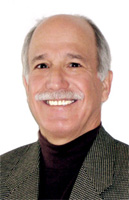Starting with web sites, then blogs and now social networks, the Internet provides a virtual and expansive version of the old public square. Web sites replace the colonial homes and stores that surround it. If Thomas Paine were alive today, “Common Sense,” would be posted on a blog rather than the square’s bulletin board. Social networks host conversations that were held on pathways and park benches. How the New Public Square ultimately influences working wider will be determined by social change more than by technology. Here’s why.
The New Public Square bustles 24/7 in non-physical space. There’s unlimited room for everyone but it’s so crazy popular that it’s hard to see or hear. The commotion requires those that speak to compete for attention. There’s always been sex, shock and snake oil salesmen. This time they’re hawking bogus multi-million dollar inheritances from Nigerian princes. Add to that the Internet’s bright, shiny media objects such as Flash video, RSS and location-based services. The result is we’re more likely to become hyperactive than attentive.
The noise level screams for better filtering skills. Today’s filters are like ear plugs at a rock concert that mute without much discrimination. We can conduct a pointed search if we know what we want but finding something that we don’t know exists is harder than ever. Search engine optimization is both a new industry and an illness – time and money spent securing higher search results often crowds out better content creation. This distortion mirrors pharmaceutical firms who divert money to marketing rather than invest more in risky drug development.
The New Public Square forgets nothing and every clue can be searched and traced backed to the point of origin. Like television’s popular CSI crime dramas, electronic bits of Facebook posts made in one context can show up as evidence during an employers’ deeper search into applicant backgrounds. Social networks host conversations in different corners of the Square but their business models won’t let us reach across one social network to another. And since anyone can say anything, vetting truth from fiction is now each individual’s responsibility.
These images capture the struggles we’re going through as we figure out how to use the New Public Square. The challenge of social change always dwarfs the technical issues. As always, we start by using the new technology to mimic what we’re used to under the old. Although the reach and communication modes are much broader, the conversations in the New Public Square are not.
New technologies don’t just improve everything done by the old. In fact, the old technologies do some things better. Due to file compression, the frequency range of a tune played on an iPod is less than that of a CD. New technologies deliver their magic by creating alternative value that’s greater than the old. Ultimately, this opens new vistas. You can’t carry all your CD’s in your pocket but an iPod fits easily. Losing a little sound quality makes that trade-off easy to accept. And now you can even watch a music video or movie if you’d rather do that.
Unleashing the new value requires multiple iterations of design and adaptive social behaviors. MP3 players didn’t take off until iTunes made loading music easy and legal. As former Apple marketing executive Steve Chaskin says, Apple doesn’t invent; they make complex things elegant and easy to use.
What will be in the next iteration of behaviors and technologies that make the New Public Square safer, elegant and easier to use?

 I'm Christopher Meyer - author of Fast Cycle Time, Relentless Growth and several Harvard Business Review articles.
I'm Christopher Meyer - author of Fast Cycle Time, Relentless Growth and several Harvard Business Review articles. 